Bias Correction Method Based on Artificial Neural Networks for Quantitative Precipitation Forecast †
Abstract
:1. Introduction
2. Model and Configuration of the ANN
3. Data Used
4. Results and Discussion
4.1. Case Study 5 July 2019
4.2. Case Study 10 July 2019
5. Conclusions
Author Contributions
Institutional Review Board Statement
Informed Consent Statement
Data Availability Statement
Conflicts of Interest
References
- Bishop, C.M. Neural Networks for Pattern Recognition; University Press: Oxford, UK, 1995. [Google Scholar]
- Haykin, S. Neural Networks: A Comprehensive Foundation, 2nd ed.; Prentice Hall: New York, NY, USA, 1998. [Google Scholar]
- Hsieh, W.W.; Tang, B. Applying neural network models to prediction and data analysis in meteorology and oceanography. Bull. Am. Meteorol. Soc. 1998, 79, 1855–1870. [Google Scholar] [CrossRef]
- Sanaz, M. Bias Correction of Global Circulation Model Outputs Using Artificial Neural Networks; Georgia Institute Technology: Atlanta, GA, USA, 2015. [Google Scholar]
- Fuentes-Barrios, A.; Sierra-Lorenzo, M.; Morfa-Ávalos, Y. Corrección del pronóstico cuantitativo de laprecipitación mediante el uso de redes neuronales. Revista Cubana de Meteorología 2020, 26, 3. [Google Scholar]
- Sierra-Lorenzo, M.; Ferrer-Hernández, A.L.; Hernández-Valdés, R.; González-Mayor, Y.; Cruz-Rodríguez, R.C.; Borrajero-Montejo, I.; Rodríguez-Genó, C. Sistema Automático de Predicción a Mesoescala de Cuatro Ciclos Diarios; Technical Report; Instituto de Meteorología de Cuba: La Habana, Cuba, 2014. [Google Scholar]
- Sierra-Lorenzo, M.; Borrajero-Montejo, I.; Ferrer-Hernández, A.L.; Hernández-Valdés Morfa-Ávalos, Y.; Morejón-Loyola, Y.; Hinojosa-Fernández, M. Estudios de Sensibilidad del Sispi a Cambios de la pbl, la Cantidad de Niveles Verticales y, las Parametrizaciones de Microfısica y Cúmulos, a muy alta Resolución; Technical Report; Instituto de Meteorología de Cuba: La Habana, Cuba, 2017. [Google Scholar]
- SisPI. 2021. Available online: http://modelos.insmet.cu/sispi/ (accessed on 15 January 2020).
- Buhigas, J. Everything you need to know about TensorFlow, Google’s Artificial Intelligence platform. Digit. Bridges 2018, 2, 14. [Google Scholar]
- Hou, A.Y.; Kakar, R.K.; Neeck, S.; Azarbarzin, A.A.; Kummerow, C.D.; Kojima, M.; Oki, R.; Nakamura, K.; Iguchi, T. The Global Precipitation Measurement Mission. Bull. Am. Meteorol. Soc. 2014, 95, 701–722. [Google Scholar] [CrossRef]
- Mesoescale & Microescale Meteorology Division. ARW Version 3 Modeling System User’s Guide; Complementary to the ARW Tech Note; NCAR: Boulder, CO, USA, 2014; p. 141. Available online: http://www2.mmm.ucar.edu/wrf/users/docs/userguideV3/ARWUsersGuideV3.pdf (accessed on 15 January 2020).
- WWRP/WGNE Joint Working Group on Verification. Forecast Verificacion-Issues, Methods and FAQ (pdf Version). 2008. Available online: http://www.cawcr.gov.au/staff/eee/verif/verif_web_page.html (accessed on 15 May 2020).
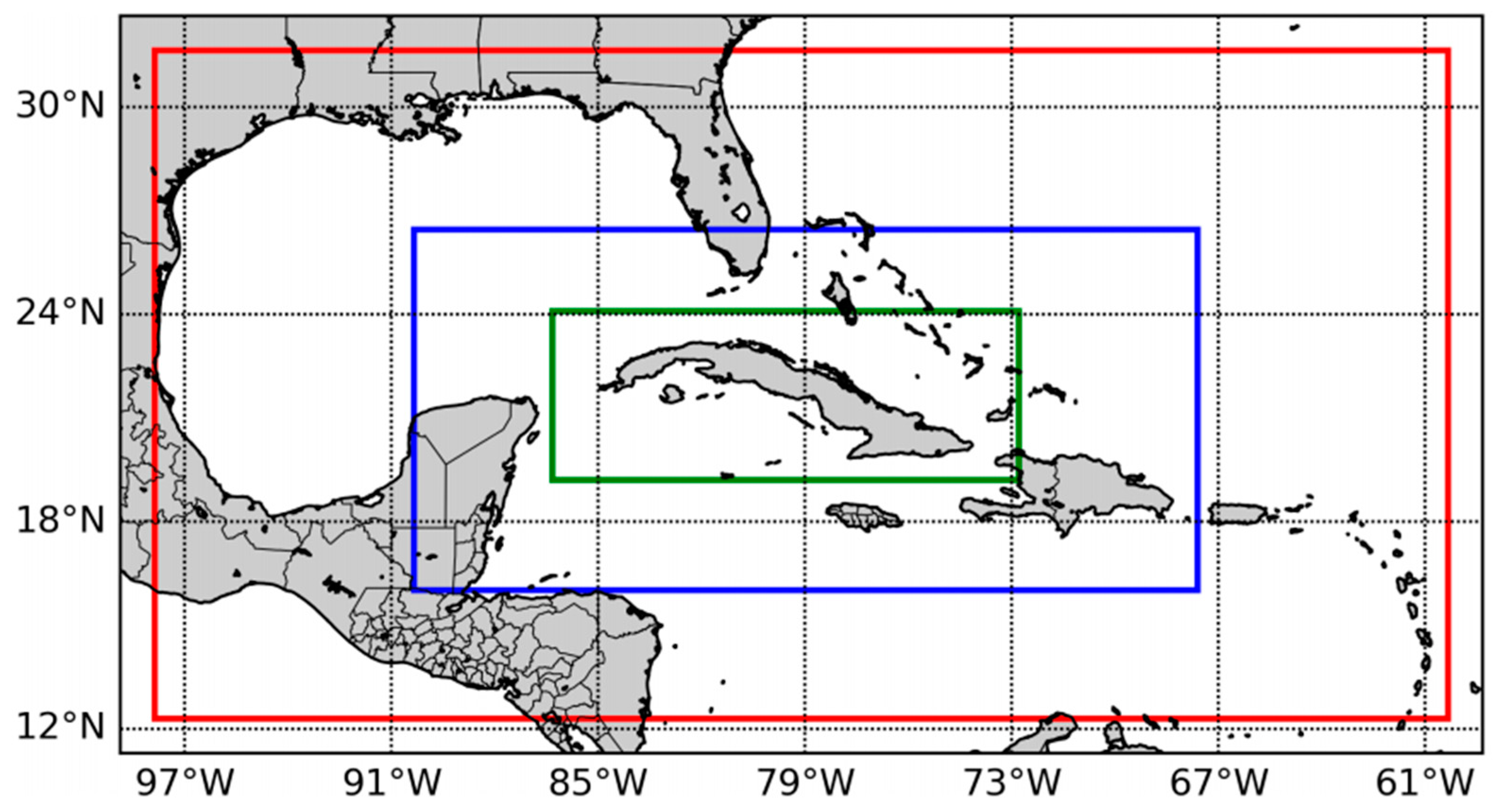

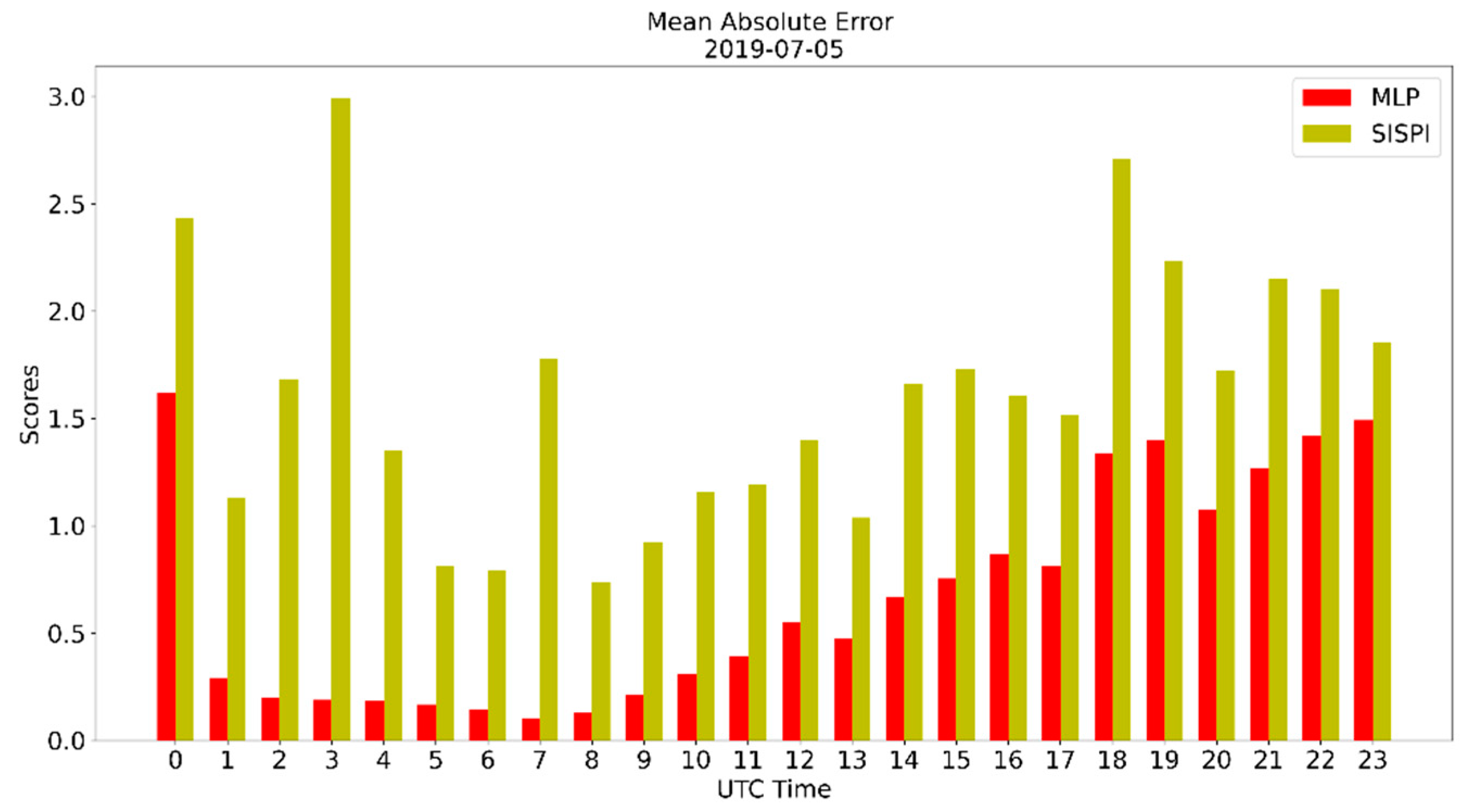
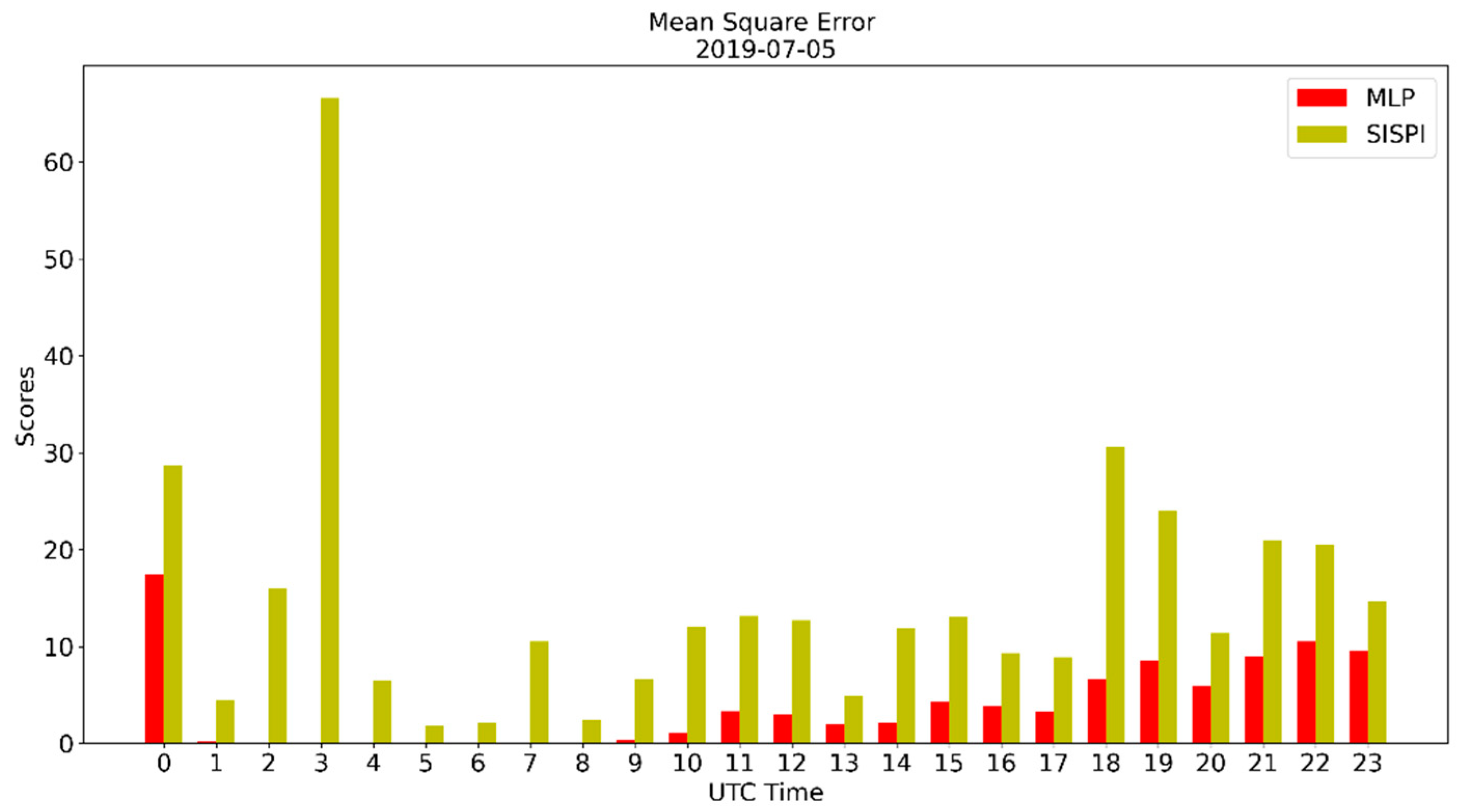


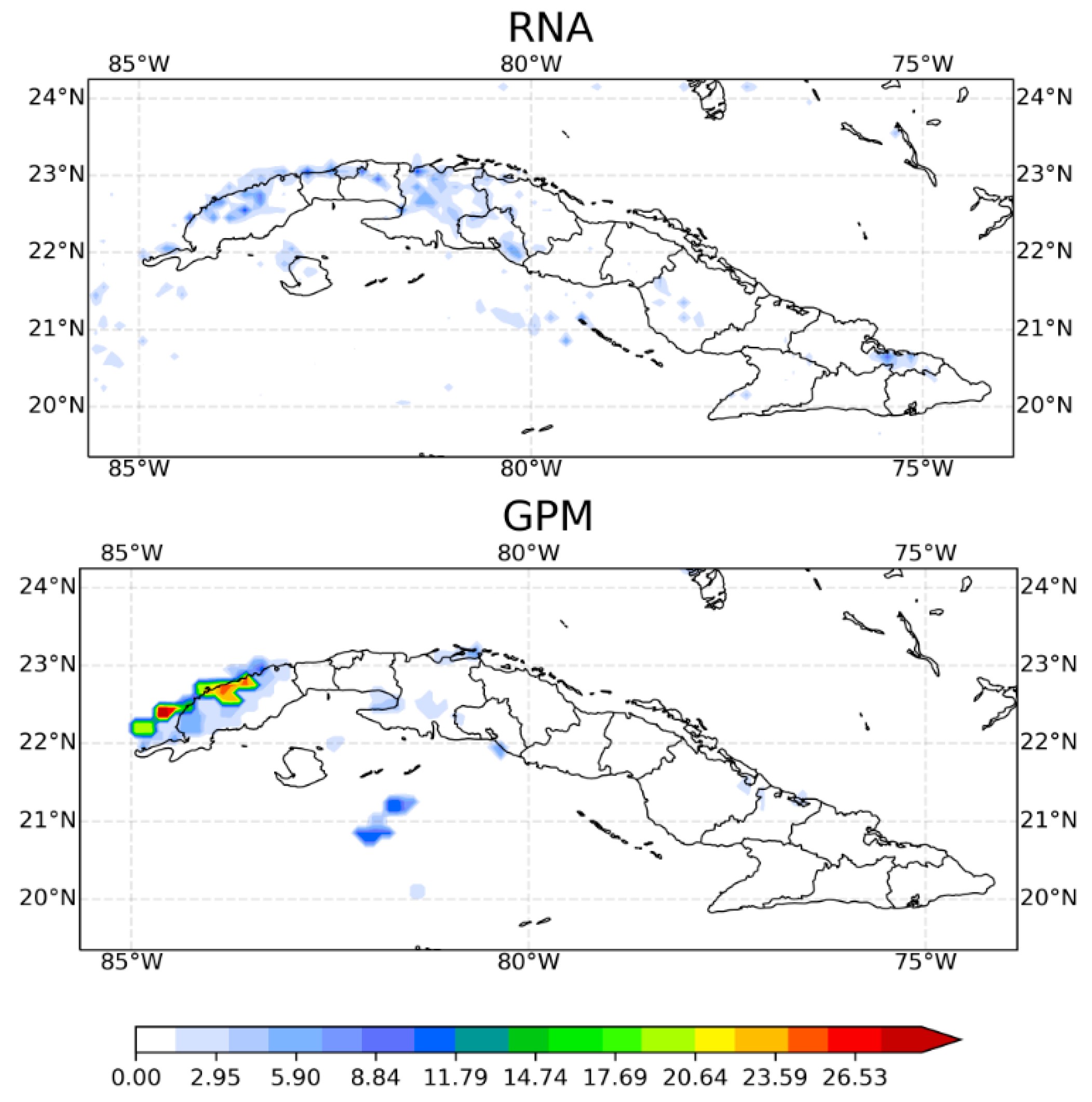

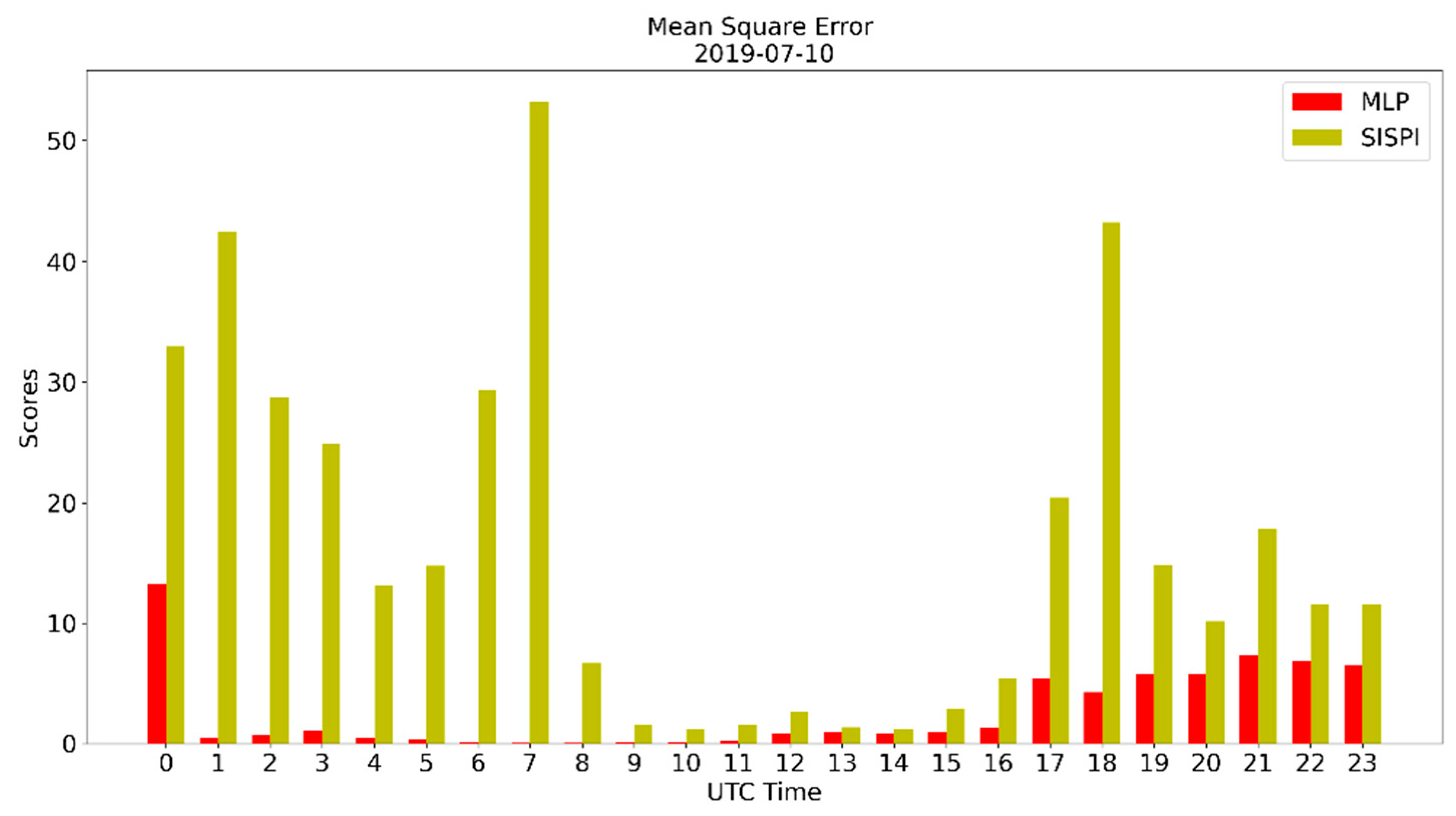
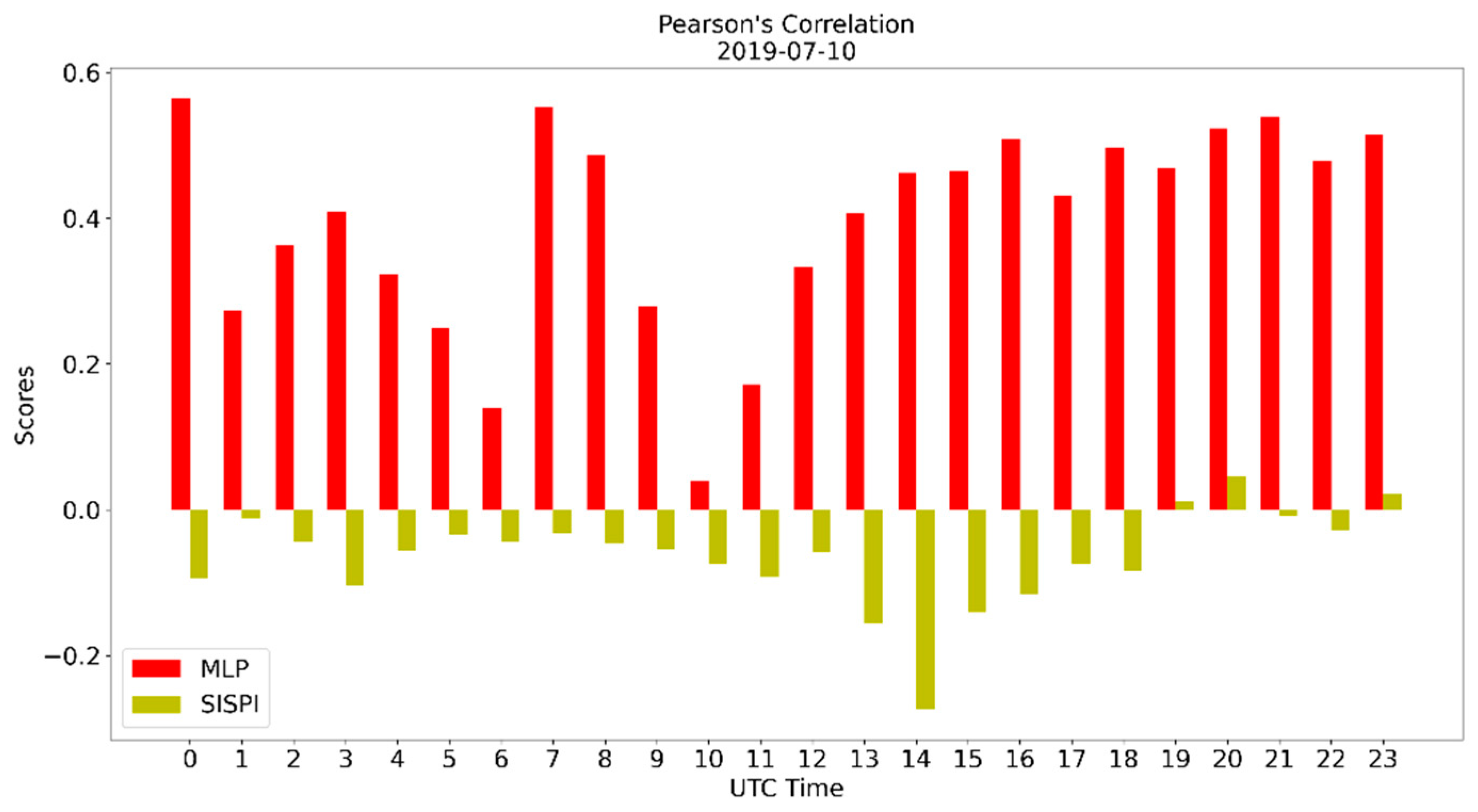
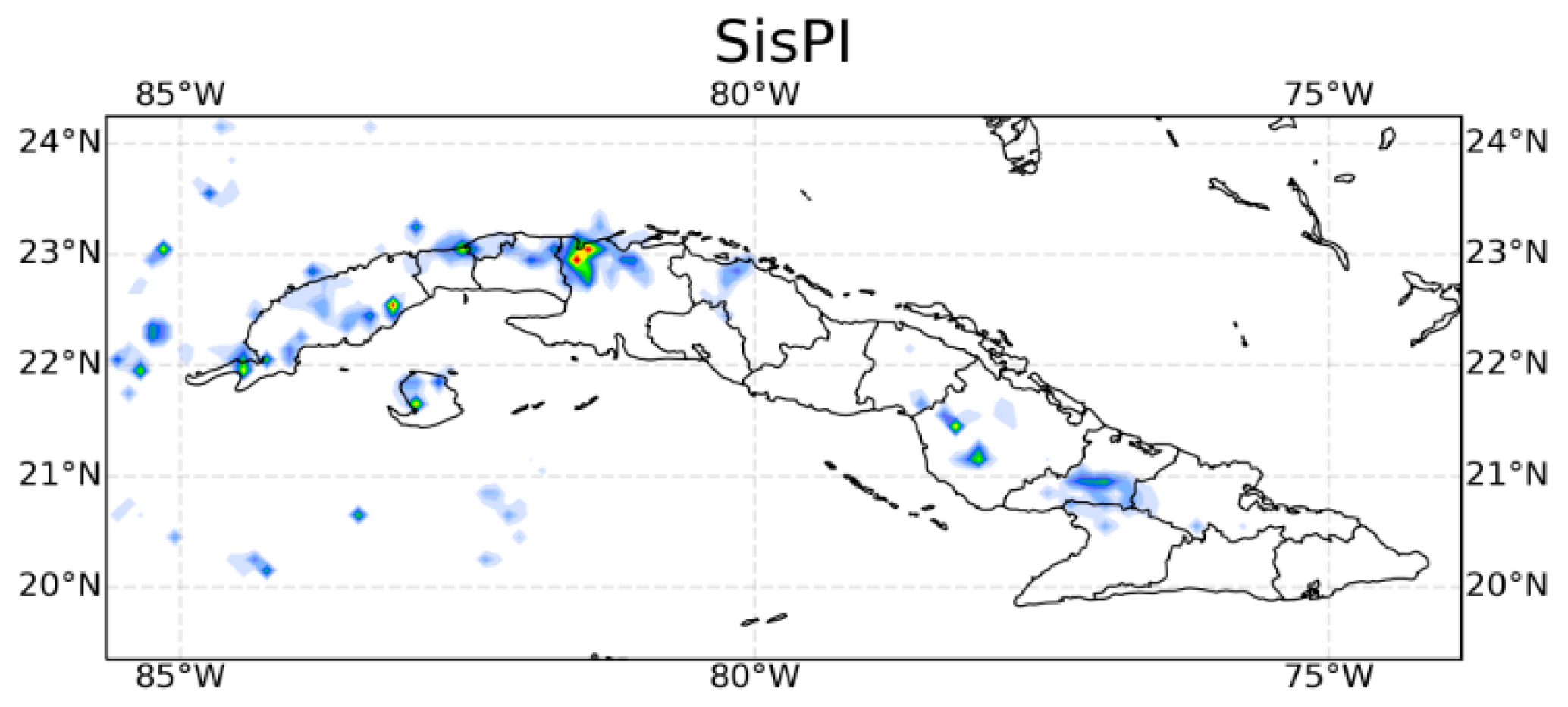
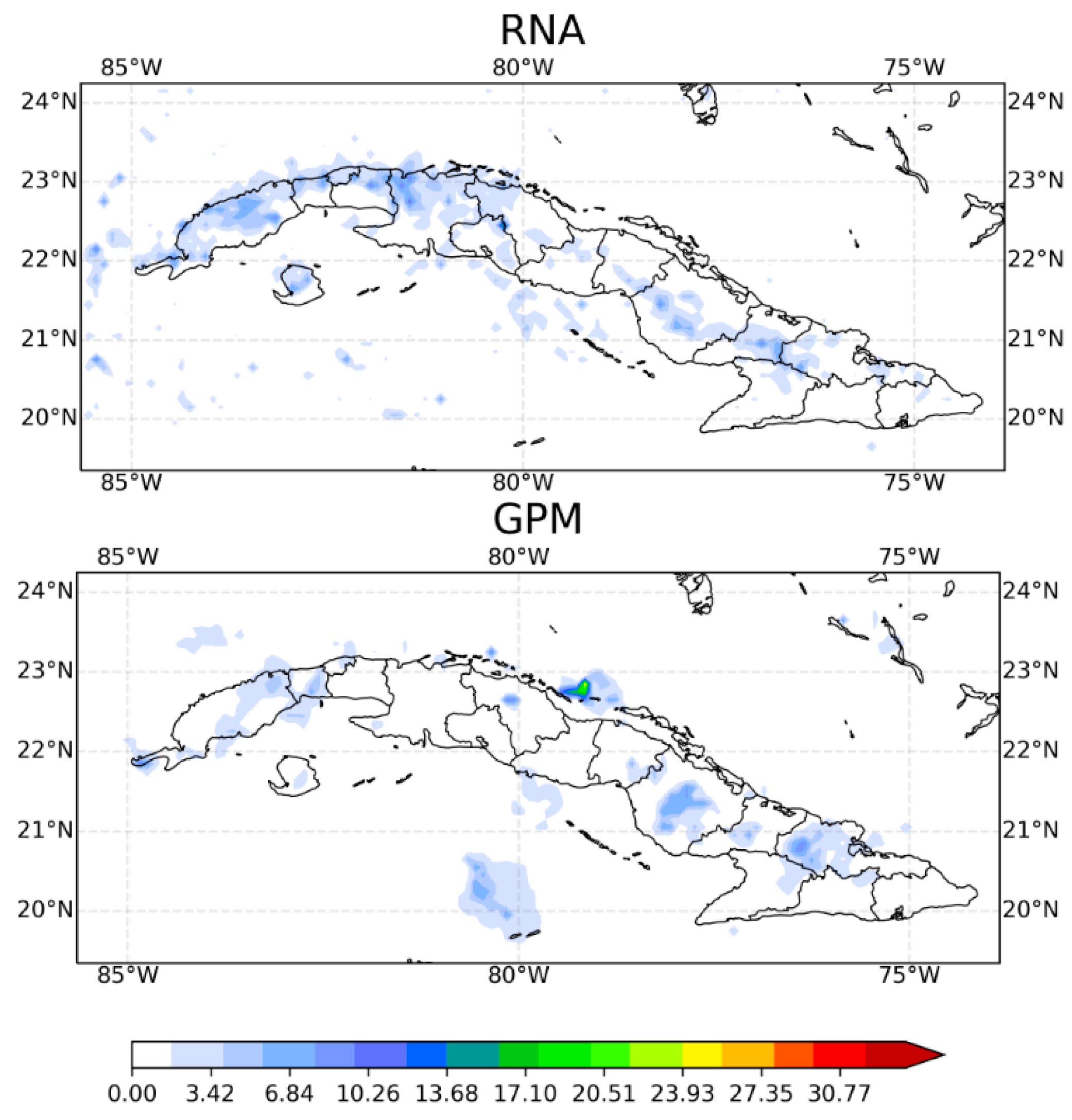
| Parameters | Settings |
|---|---|
| Spatial resolution | Three nested domains of 27, 9, and 3 km of resolution |
| Nx | 145, 162, 469 |
| Ny | 82, 130, 184 |
| Nz | 28, 28, 28 |
| Domain center | 21.8 N, 79.74 W |
| Time step | 150 s |
| Microphysics | WSM5, WSM5, and double-moment Morrison |
| Cumulus | Grell–Freitas, Grell–Freitas, and not activated |
| Long radiation | RRTM scheme: Rapid Radiative Transfer Model |
| Short radiation | Dudhia scheme: simple downward integration allowing for efficient cloud and clear-sky absorption and scattering |
| Surface physics | Noah land surface model: unified NCEP/NCAR/AFWA scheme with soil temperature and moisture in four layers, fractional snow cover, and frozen soil physics. |
| Surface layer | Eta similarity: Used in the Eta model |
| PBL | Mellor–Yamada–Janjic, Mellor–Yamada–Janjic, and Mellor–Yamada–Janjic |
Publisher’s Note: MDPI stays neutral with regard to jurisdictional claims in published maps and institutional affiliations. |
© 2021 by the authors. Licensee MDPI, Basel, Switzerland. This article is an open access article distributed under the terms and conditions of the Creative Commons Attribution (CC BY) license (https://creativecommons.org/licenses/by/4.0/).
Share and Cite
Fuentes-Barrios, A.; Sierra-Lorenzo, M. Bias Correction Method Based on Artificial Neural Networks for Quantitative Precipitation Forecast. Environ. Sci. Proc. 2021, 8, 38. https://doi.org/10.3390/ecas2021-10356
Fuentes-Barrios A, Sierra-Lorenzo M. Bias Correction Method Based on Artificial Neural Networks for Quantitative Precipitation Forecast. Environmental Sciences Proceedings. 2021; 8(1):38. https://doi.org/10.3390/ecas2021-10356
Chicago/Turabian StyleFuentes-Barrios, Adrián, and Maibys Sierra-Lorenzo. 2021. "Bias Correction Method Based on Artificial Neural Networks for Quantitative Precipitation Forecast" Environmental Sciences Proceedings 8, no. 1: 38. https://doi.org/10.3390/ecas2021-10356
APA StyleFuentes-Barrios, A., & Sierra-Lorenzo, M. (2021). Bias Correction Method Based on Artificial Neural Networks for Quantitative Precipitation Forecast. Environmental Sciences Proceedings, 8(1), 38. https://doi.org/10.3390/ecas2021-10356






